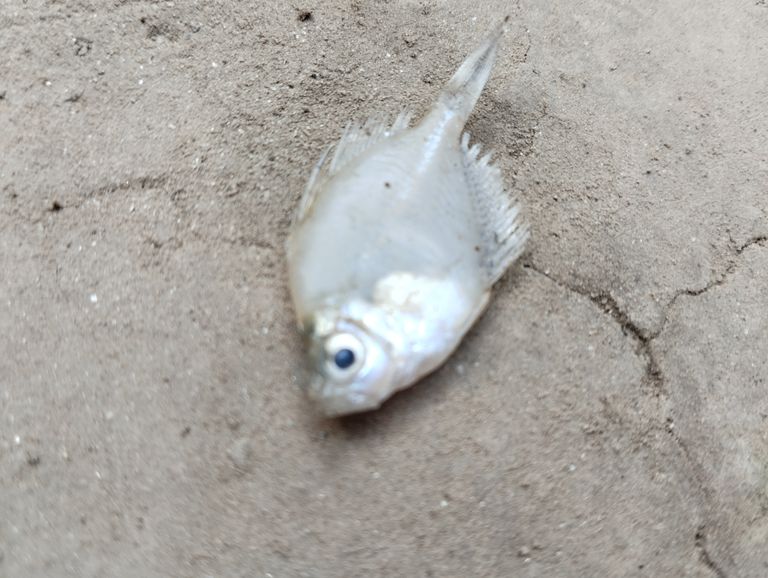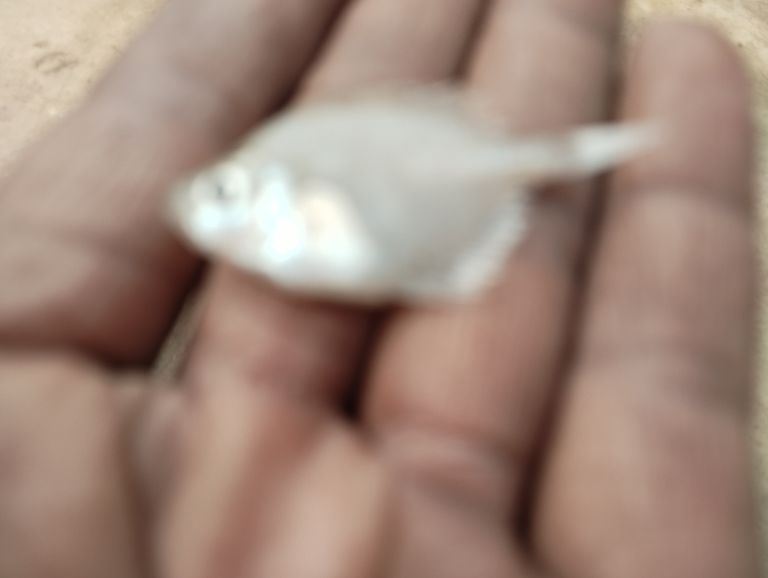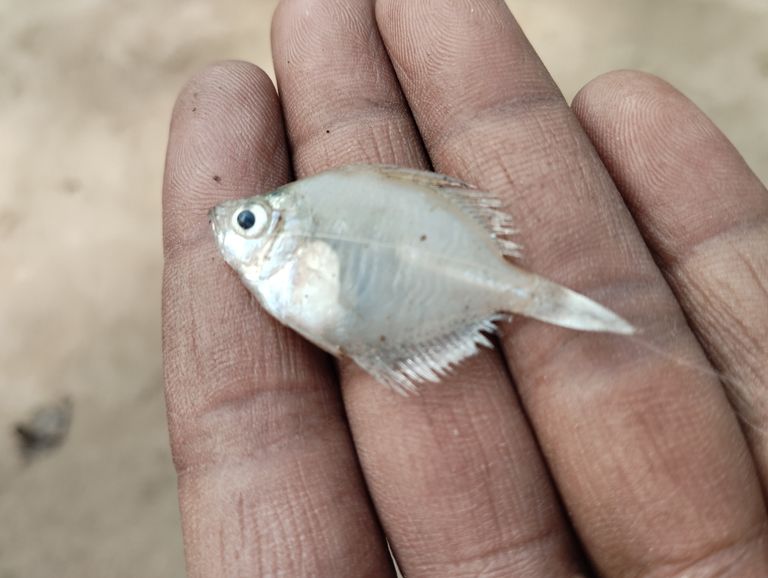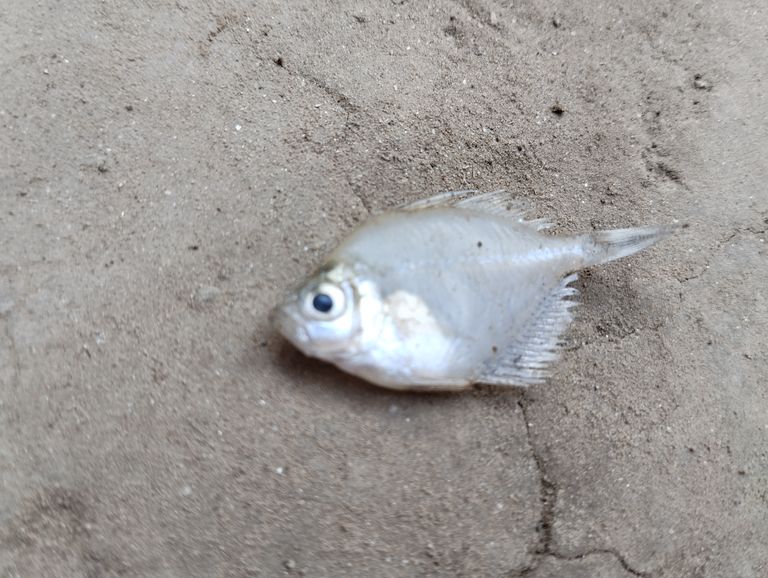
Chanda Fish Recipe A Delicacy of Flavor and Tradition.
Chanda fish, also known as Glass Perch or Indian Glass Fish, is a small freshwater fish widely loved for its delicate taste and texture. Common in South Asia, particularly in India and Bangladesh, it’s a versatile ingredient perfect for curries or fried preparations. This blog will guide you through a traditional and flavorful Chanda fish recipe that will become a staple in your kitchen.
About Chanda Fish
Chanda fish gets its name from its translucent body, making it a unique and visually appealing variety of fish. It’s rich in protein, vitamins, and minerals, making it a healthy addition to your diet. The fish is small in size, so cleaning and preparation require a little patience, but the result is worth the effort.
Ingredients for Chanda Fish Curry
For this recipe, you’ll need the following ingredients:
For Marination:
300 grams of Chanda fish (cleaned and gutted)
1/2 teaspoon turmeric powder
1/2 teaspoon salt
For Curry:
2 tablespoons mustard oil (or any cooking oil)
1 medium onion (finely chopped)
1 medium tomato (finely chopped)
2 green chilies (slit lengthwise)
1 teaspoon ginger-garlic paste
1/2 teaspoon turmeric powder
1 teaspoon red chili powder
1/2 teaspoon cumin powder
1/2 teaspoon coriander powder
1/2 teaspoon garam masala
Salt to taste
1 cup water
Fresh coriander leaves (chopped) for garnish
Step-by-Step Preparation
Step 1: Cleaning and Marinating the Fish
- Begin by thoroughly cleaning the Chanda fish under running water. Remove any impurities or excess scales.
- Pat the fish dry using a clean kitchen towel.
- In a bowl, marinate the fish with turmeric powder and salt. Set it aside for 15-20 minutes. This step helps enhance the flavor and removes any unwanted odor.
Step 2: Frying the Fish
- Heat 1 tablespoon of mustard oil in a pan. Allow it to smoke lightly to remove the raw smell.
- Gently fry the marinated fish on medium heat for 2-3 minutes on each side until they turn golden brown. Be careful not to overcook as the fish is delicate.
- Remove the fried fish and set them aside.
Step 3: Preparing the Curry
- In the same pan, heat another tablespoon of mustard oil. Add chopped onions and sauté until golden brown.
- Add ginger-garlic paste and stir until the raw aroma disappears.
- Toss in the chopped tomatoes and green chilies. Cook until the tomatoes soften and the mixture releases oil from the sides.
- Lower the heat and add turmeric powder, red chili powder, cumin powder, and coriander powder. Stir well to combine.
- Pour 1 cup of water into the pan and bring it to a boil.
Step 4: Cooking the Fish in Curry
- Carefully place the fried Chanda fish into the curry. Be gentle while stirring to avoid breaking the fish.
- Cover the pan and simmer for 5-7 minutes, allowing the fish to absorb the flavors.
- Sprinkle garam masala and adjust salt if needed. Stir gently.
Step 5: Garnishing and Serving
- Turn off the heat and garnish the curry with freshly chopped coriander leaves.
- Serve the Chanda fish curry hot with steamed rice or chapati for a wholesome meal.
Tips for Cooking Chanda Fish
- Handle with Care: Due to its small size and delicate texture, Chanda fish requires gentle handling to avoid breaking.
- Freshness Matters: Always use fresh fish for the best flavor and nutritional benefits.
- Spice Balance: Adjust the spices to your preference. Chanda fish has a natural sweetness that pairs well with moderate heat.
Health Benefits of Chanda Fish
Rich in Protein: A great source of lean protein, essential for muscle building and repair.
Low in Calories: Perfect for those looking to maintain a healthy diet.
Omega-3 Fatty Acids: Promotes heart health and improves brain function.
Essential Nutrients: Packed with vitamins like B12 and minerals like calcium and phosphorus.
Chanda fish curry is a simple yet flavorful dish that brings out the authentic taste of South Asian cuisine. Whether you're a seafood lover or exploring new culinary adventures, this recipe is sure to impress. Serve it with steamed rice for a comforting meal that connects you to the traditions of coastal kitchens.

Rules for Catching Chandana Fish (Chanda Fish)
Chanda fish, often referred to as Chandana fish, is a small, translucent freshwater fish found in South Asia, especially in rivers, canals, and wetlands. This fish is prized for its delicate texture and taste, making it a popular catch for anglers and fishermen. However, to ensure sustainable fishing and protect aquatic biodiversity, it is essential to follow specific rules and regulations when catching Chanda fish. Below is a detailed guide on the rules for catching Chandana fish.
- Understanding Chandana Fish Habitats
Chanda fish thrive in freshwater bodies like rivers, ponds, and wetlands. They are particularly abundant during the rainy season when water levels rise. Protecting these habitats is critical for maintaining the species' population.
Avoid fishing in areas where fish populations are already declining.
Ensure that the water bodies are free from pollution, as contaminated habitats can harm fish and aquatic life.
- Seasonal Restrictions
To allow fish to reproduce and maintain their populations, many regions impose seasonal bans on fishing.
Avoid catching Chanda fish during their breeding season, which typically occurs during the monsoon months (June to August).
Follow government-imposed fishing bans, if any, to support fish conservation efforts.
- Legal Fishing Nets and Equipment
Using proper fishing equipment is essential to avoid harming juvenile fish and the ecosystem.
Use nets with larger mesh sizes to prevent catching juvenile fish.
Avoid using harmful methods like poison, explosives, or electric currents, as they can devastate the aquatic environment.
Traditional fishing rods and nets are encouraged for sustainable fishing practices.
- Size and Catch Limits
Overfishing is a significant threat to aquatic species, including Chanda fish. To prevent overexploitation:
Do not catch fish smaller than the legal size limit, as they have not yet reached maturity.
Follow catch limits set by local authorities to ensure sustainable fishing.
Release undersized fish back into the water to allow them to grow and reproduce.
- Fishing Licenses and Permits
In many areas, fishing is regulated to control overfishing and preserve aquatic biodiversity.
Obtain the necessary fishing licenses or permits before catching Chanda fish.
Be aware of the local rules and regulations regarding fishing in specific water bodies.
- Community-Based Conservation
Local communities often play a vital role in conserving aquatic resources.
Participate in community-driven initiatives to protect fish habitats.
Avoid fishing in areas designated as fish sanctuaries or conservation zones.
Support local awareness campaigns about sustainable fishing practices.
- Avoiding Bycatch
Bycatch refers to the unintended capture of non-target species during fishing. This practice can harm other aquatic animals.
Use selective fishing methods to minimize bycatch.
Release any non-target species caught unintentionally back into the water.
- Maintaining Ecological Balance
Chanda fish are an essential part of the aquatic food chain. Overfishing can disrupt the ecological balance.
Avoid fishing excessively in a single area to allow the ecosystem to recover.
Protect aquatic vegetation, as it provides shelter and breeding grounds for Chanda fish.
- Awareness and Education
Educating fishermen and local communities about sustainable fishing practices is crucial for long-term conservation.
Participate in workshops and training programs on sustainable fishing.
Share knowledge about the importance of protecting aquatic ecosystems.
- Penalties for Illegal Fishing
Many governments enforce strict penalties for illegal fishing practices to protect aquatic biodiversity.
Be aware of the fines and legal actions associated with violating fishing regulations.
Report any illegal fishing activities to local authorities to support conservation efforts.
Catching Chandana fish can be a rewarding experience, but it is essential to follow the rules and regulations to protect the species and its habitat. Sustainable fishing practices not only ensure the availability of Chanda fish for future generations but also maintain the health of aquatic ecosystems. By respecting seasonal restrictions, using proper equipment, and adhering to legal guidelines, we can contribute to the conservation of this valuable species.

Chanda Fish Food: A Comprehensive Guide
Chanda fish, also known as Glass Fish or Indian Glassy Perchlet (scientifically called Parambassis ranga), is a fascinating freshwater species native to South and Southeast Asia. Known for their translucent bodies, Chanda fish are popular among aquarium enthusiasts for their unique appearance and peaceful temperament. To ensure their health and longevity, providing the right diet is essential. In this blog, we’ll explore everything you need to know about feeding Chanda fish.
Understanding the Diet of Chanda Fish
Chanda fish are primarily carnivorous, thriving on a diet rich in protein. In their natural habitat, they feed on small insects, larvae, crustaceans, and zooplankton. Replicating their natural diet in captivity is crucial to maintaining their health and vibrant appearance.
Types of Food for Chanda Fish
Here are some of the most suitable food options for Chanda fish:
- Live Food
Live food is the most natural and preferred option for Chanda fish as it mimics their diet in the wild. Examples include:
Daphnia: Also known as water fleas, Daphnia are a rich source of protein and fiber.
Bloodworms: These are mosquito larvae that are highly nutritious and readily accepted by Chanda fish.
Brine Shrimp: A perfect source of protein and omega-3 fatty acids.
Tubifex Worms: These worms are rich in nutrients but should be fed sparingly to avoid water contamination.
- Frozen Food
If live food is unavailable, frozen food is a great alternative. It is convenient, long-lasting, and retains most of the nutritional value. Frozen options include:
Frozen bloodworms
Frozen brine shrimp
Frozen krill
- Dry Food
Commercial dry food, such as flakes or pellets, can be included in their diet for convenience. However, these should be high in protein and specifically designed for carnivorous fish. When choosing dry food, look for the following:
High protein content
Minimal fillers and additives
Small sizes suitable for Chanda fish
- Insects and Larvae
Chanda fish also enjoy eating small insects and larvae. You can provide them with:
Mosquito larvae
Wingless fruit flies
Microworms
- Homemade Fish Food
For aquarium hobbyists who prefer a more personalized approach, homemade fish food can be prepared. You can create a mix of the following ingredients:
Cooked shrimp or fish
Spinach or peas for added vitamins
Gelatin to bind the ingredients
Blend these into a paste, freeze them, and cut them into small pieces for feeding.
Feeding Tips for Chanda Fish
To ensure your Chanda fish remain healthy and active, follow these feeding tips:
- Feed Small Quantities: Overfeeding can lead to water pollution and health issues like bloating. Provide only as much food as they can consume within 2-3 minutes.
- Maintain Variety: A diverse diet ensures they receive all essential nutrients. Alternate between live, frozen, and dry food.
- Feed Twice a Day: Offer food in small portions twice daily to mimic their natural feeding habits.
- Monitor Water Quality: Uneaten food can decompose and degrade water quality. Remove any leftovers promptly.
- Supplements: Occasionally, add fish supplements like vitamin-enriched drops to enhance their immunity and coloration.
Foods to Avoid
Not all foods are suitable for Chanda fish. Avoid the following:
Bread or human food: These can cause digestive issues and water contamination.
Large pellets or flakes: Ensure the food size is small enough for their tiny mouths.
Low-quality dry food: These may contain fillers that lack nutritional value.
Special Considerations for Dyed Chanda Fish
Dyed Chanda fish are artificially colored variants of the species. While they look appealing, the dyeing process can weaken their immune systems. If you own dyed Chanda fish, focus on a protein-rich diet supplemented with vitamins to boost their health. Avoid exposing them to stress and maintain pristine water conditions.
Feeding Chanda fish the right diet is essential for their health, coloration, and overall well-being. Whether you choose live food, frozen options, or high-quality dry food, maintaining variety and proper portion sizes is key. By understanding their dietary needs and mimicking their natural eating habits, you can ensure your Chanda fish thrive in your aquarium for years to come.
Remember, a well-fed Chanda fish is a happy fish! So, take the time to provide them with the best nutrition possible.

Chanda Fish Curry with Potatoes: A Traditional Bengali Delight
Bengali cuisine is a treasure trove of flavors, and one such hidden gem is the humble Chanda fish curry with potatoes, or as we fondly call it, "Chanda Machher Alu Chorchori." This dish is simple, comforting, and carries the essence of everyday Bengali home-cooked meals. Perfectly paired with steaming hot rice, this curry is not just a meal but a nostalgic journey to the heart of Bengal.
What is Chanda Fish?
Chanda fish, also known as glass perch or Indian glassy fish, is a small freshwater fish widely consumed in Bengal and other parts of South Asia. Its delicate texture and mild flavor make it ideal for light curries and stir-fries. In Bengali households, Chanda fish is often used to prepare chorchori, a semi-dry curry with vegetables, that is both nutritious and flavorful.
Why Potatoes?
Potatoes are a staple in Bengali cuisine, often added to enhance the texture and absorb the spices. In this dish, the potatoes add a soft, starchy contrast to the tender Chanda fish, making the curry more wholesome and filling.
Ingredients
To prepare Chanda fish curry with potatoes, you’ll need:
Chanda fish: 250 grams (cleaned and washed)
Potatoes: 2 medium-sized (peeled and diced)
Onion: 1 large (thinly sliced)
Tomatoes: 1 medium (chopped)
Green chilies: 3-4 (slit)
Mustard seeds: ½ teaspoon
Turmeric powder: ½ teaspoon
Red chili powder: ½ teaspoon
Cumin powder: 1 teaspoon
Mustard oil: 2 tablespoons (or any cooking oil of choice)
Salt: To taste
Water: 1 cup
Instructions
Step 1: Prepare the Fish
- Clean the Chanda fish thoroughly under running water. Drain excess water.
- Marinate the fish with a pinch of turmeric powder and salt. Let it rest for 10-15 minutes.
Step 2: Fry the Fish
- Heat mustard oil in a pan until it starts to smoke slightly, then lower the flame.
- Gently fry the marinated Chanda fish in batches until golden brown on both sides. Be careful as the fish is delicate and can break easily. Remove and set aside.
Step 3: Prepare the Curry Base
- In the same pan, add mustard seeds and let them splutter.
- Add sliced onions and sauté until golden brown.
- Add the diced potatoes and stir-fry for 3-4 minutes.
- Add turmeric powder, red chili powder, cumin powder, and salt. Mix well and sauté until the spices are aromatic.
- Add the chopped tomatoes and cook until they soften and blend with the spices.
Step 4: Cook the Potatoes
- Add a cup of water to the pan and bring it to a boil.
- Cover the pan and let the potatoes cook on low heat until they are tender.
Step 5: Add the Fish
- Once the potatoes are cooked, gently add the fried Chanda fish to the curry.
- Add slit green chilies for a subtle heat and flavor.
- Simmer for another 5 minutes, allowing the fish to soak up the flavors of the curry.
Step 6: Final Touch
- Drizzle a teaspoon of mustard oil on top for an authentic Bengali touch.
- Remove from heat and let the curry rest for a few minutes before serving.
Serving Suggestions
Chanda fish curry with potatoes is best enjoyed with a plate of hot steamed rice. The light and flavorful curry complements the rice perfectly, making it a comforting meal for any day.
Tips for Perfect Chanda Fish Curry
Always use fresh Chanda fish for the best flavor and texture.
Handle the fish gently to avoid breaking it during cooking.
Adjust the spice levels according to your preference.
Mustard oil adds an authentic Bengali flavor, but you can use any neutral oil if unavailable.
Nutritional Benefits
Chanda fish is a great source of protein, omega-3 fatty acids, and essential vitamins, making it a healthy addition to your diet. When paired with potatoes, it provides a balanced meal with carbohydrates and nutrients.
Final Thoughts
Chanda fish curry with potatoes is more than just a dish—it’s a reflection of Bengali tradition and simplicity. It’s a perfect example of how minimal ingredients can create something so hearty and delicious. Whether you're a seasoned cook or new to Bengali cuisine, this recipe is worth a try.